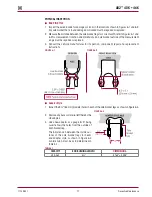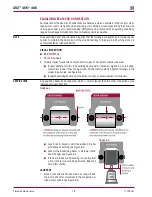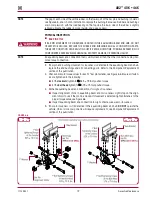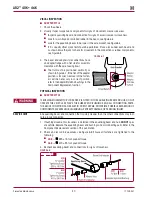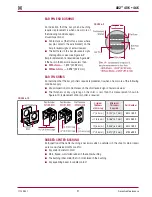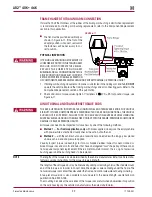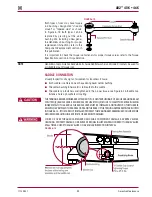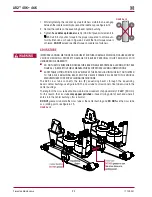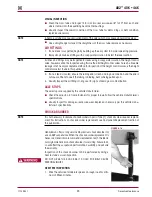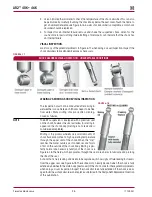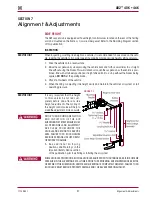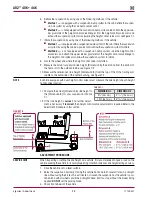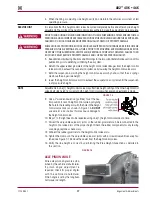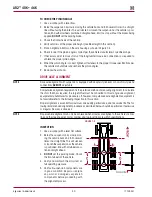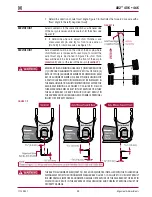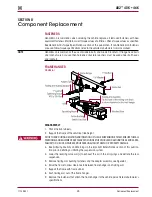
Preventive Maintenance
20
17730-241
AR2
™
40K • 46K
VISuAL INSpECTION
■
AdApTER STYLE
1 . Chock the wheels .
2 . Visually inspect suspension components for signs of movement or excessive wear .
■
Inspect equalizing beam end connection for signs of excessive wear or looseness
■
Look for worn, frayed or distorted rubber in the beam, see Figure 6-4
■
Look for the equalizing beam to be lower in the axle bracket, see Figure 6-4
■
If it is visually offset a jack test should be performed . Place a jack under each beam end
as shown . Raise the jack to check for movement in the connection or rubber components,
see Figure 6-5
FIguRE 6‑7
3 . The beam end adapter style connections have
an adapter flange with a flat side for assembly
clearance with the axle housing bowl .
■
The flat must be positioned vertically as
shown in Figure 6-7 . If the flat of the adapter
position is incorrect, removal of the fasten-
ers will be necessary to correct position,
refer to the Adapter Style End bushings in the
Component Replacement section
pHYSICAL INSpECTION
■
AdApTER STYLE
IF BUSHING MOVEMENT OR LOOSENESS IS NOTED IN THE EQUALIZING BEAM END HUB, DO NOT
OPERATE THE VEHICLE . REPLACE THE RUBBER END BUSHINGS AND ALL CONNECTING PARTS .
THE ABOVE CONDITION CAN RESULT IN COSTLY REPAIR, DOWNTIME, POSSIBLE SEPARATION OF
COMPONENTS, ADVERSE VEHICLE HANDLING, PROPERTY DAMAGE, OR PERSONAL INjURY .
SERVICE HINT
An equalizing beam end connection that is visibly cleaner than the other connections may indi-
cate a loose connection .
1 . If bushing movement or looseness is detected in the equalizing beam end hub,
dO NOT
oper-
ate vehicle . Replace the equalizing beam end bushings and all connecting parts . Refer to the
Component Replacement section of this publication .
2 . Check and record torque values, see Figure 6-8 . Ensure all fasteners are tightened to the
following:
■
40K
— 225 ± 15 foot pounds torque
■
46K
— 470 ± 25 foot pounds torque
3 . Recheck equalizing beam end connections for signs of looseness .
FIguRE 6‑8












